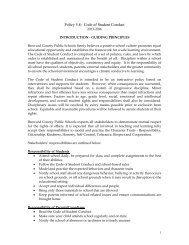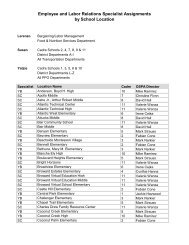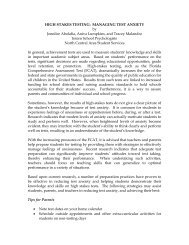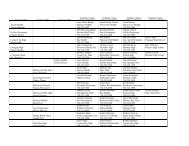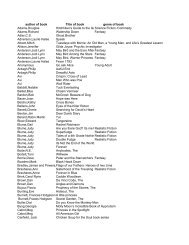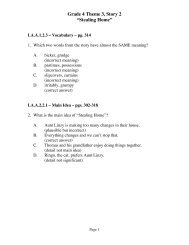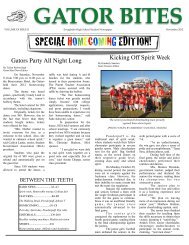Haitian Culture Curriculum Guide
Haitian Culture Curriculum Guide
Haitian Culture Curriculum Guide
Create successful ePaper yourself
Turn your PDF publications into a flip-book with our unique Google optimized e-Paper software.
whites and three mulattos. Their mission was to prepare a constitution for the island of Saint<br />
Domingue.<br />
On May 9, 1801, the assembly presented the island’s first constitution to Toussaint. He was<br />
named Governor General for Life with power to choose his successor. Everything was centralized<br />
under his sole authority. He would propose and promulgate laws; make all appointments, control<br />
finances, and command armies.<br />
Toussaint’s constitution was authoritarian, centralizing, and largely despotic. It did not take long<br />
for those who were most affected by his decisions, especially the cultivators who were afraid of the<br />
return to slavery, to enter into rebellion. He reacted strongly and too often abusively. He gradually<br />
lost the support he needed for a productive and successful administration.<br />
In France, people were fearful of Toussaint and unhappy about his leadership of the one time<br />
richest French colony. Napoleon himself was enraged against the Governor General for Life and<br />
his arrogance. Determined to annihilate the government of the blacks in Saint Domingue, he<br />
ordered an expedition of 22,000 French, Spanish, and Dutch soldiers who sailed on eighty-six<br />
warships from several ports in Europe. Napoleon appointed his twenty-nine-year-old brother-inlaw,<br />
Victor-Emmanuel Leclerc, to arrest and deport Toussaint Louverture.<br />
About six months after his arrival, Leclerc led Toussaint into a trap, arrested him on June 7, 1802,<br />
and “shipped” him to France, where he was incarcerated at Fort de Joux, on the glacial top of the<br />
Jura mountain. On the morning of April 7, 1803, Toussaint Louverture was dead. He was found<br />
seated in a chair near the fire, his head resting against the chimney.<br />
Independence at Last<br />
Toussaint’s right arm, Jean-Jacques Dessalines, succeeded him as General-in-Chief of the rebels<br />
after an agreement with General Alexandre Petion for the love of liberty and independence. Petion<br />
was a mulatto born free who returned from France to Saint Domingue with Leclerc’s army.<br />
Dessalines was born in slavery on habitation Cormiers between 1746 and 1758, and was named<br />
Jacques Duclos after his master.<br />
Rebellious and disobedient, the young slave grew up under the whips and lashes of the plantation<br />
commanders. He became a young man of medium height with powerful, muscular limbs. His face<br />
and body were covered with furrows encrusted on his skin by frequent lashings.<br />
When he was thirty-three years old, Jean-Jacques was sold to a black slave owner whose name was<br />
Des Salines. This new owner was a carpenter. Jean-Jacques learned from this master, who<br />
considered him a good worker. Their relationship was so cordial that Jean-Jacques was pleased to<br />
have a new name, which became Dessalines.<br />
His former master, Duclos, may have sold him because of his possible participation in the Bwa<br />
Kayiman gathering of August 14, 1791, along with Toussaint Louverture, supposedly Reverend P.<br />
Cabon, a catholic priest, reported that Dessalines participated in the slave uprising of 1791 and<br />
joined the French army with Toussaint Louverture in 1794.<br />
As General-in-Chief of the rebels, Dessalines proposed to finish the work begun by Makandal and<br />
Boukman.<br />
The same forces that molded Toussaint’s genius had helped the emergence of his black and mulatto<br />
senior generals and officials. The most famous among the black generals was Dessalines. He was<br />
6



